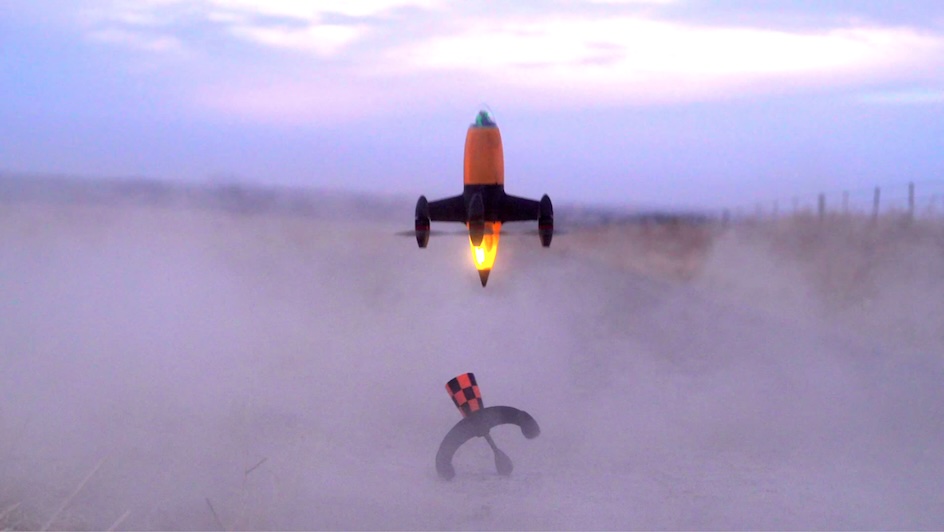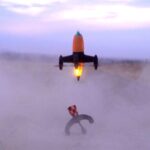#ThrowbackThursday – 20 July

To quote US astronaut Neil Armstrong: “Shoot for the stars, but if you happen to miss, shoot for the moon instead.”
At its core, it’s a reminder that even if you have certain goals in mind but you fail to achieve them, that doesn’t mean you should give up. Instead, pick yourself up, set new goals for yourself, and give it your all until you achieve them. In other words, failures should not – will not – stop you from achieving great things in the end.
On that note, take a look at these three events that went down in history on 20 July:
1969 – To The Moon
“That’s one small step for man, one giant leap for mankind.”
These are the even more famous words of Armstrong himself, one of the three astronauts who partook in NASA’s first manned lunar landing mission in 1969.
When the Apollo 11 lunar module landed on the moon on 20 July, Armstrong became the first man to set foot on its powdery surface seven hours later (02:56 AM, 21 July), uttering his now-iconic line as he did so. Approximately 600 million people watched – and heard – him as the historic moment was televised worldwide.
Together with Buzz Aldrin (their colleague, Michael Collins, remained in the command module as it travelled in lunar orbit), Armstrong traversed the cratered landscape, collected more than 20kg of moon rocks, took photographs of the moon’s surface (including an imprint of Aldrin’s bootprint), and conducted scientific tests (including a glass prism experiment that measured how long it took for light to return to Earth).
Three days later, the three astronauts returned to Earth with a splashdown in the Pacific Ocean. Their mission to the moon not only broadened the fields of science, astrophysics and engineering for years to come, but it also broadened the imagination and wonder of the public for an eternity.
1973 – Rest in Power, Bruce Lee
It’s always tragic when Hollywood loses one of its stars, especially when they’re so young. Bruce Lee was one such star – he was only 32 when he passed away from a brain edema.
First and foremost a practitioner of martial arts, Lee – who was born in the USA in 1940 but raised in Hong Kong – was trained in kickboxing, boxing and Wing Chun kung fu (the latter under the famed grandmaster Ip Man). Additionally, he was a child actor and appeared in 20 Chinese films by the time he was 18.
When Lee returned to America in 1959, he opened a martial arts school. However, he nursed dreams of breaking into Hollywood. In 1964, his wish came true (somewhat) when film producer William Dozer noticed him at a martial arts exhibition in Long Beach, California. This led to Lee being cast as Kato in the 1966 series, “The Green Hornet” – soon, though, he was out of work after the show ran for one season.
This prompted Lee to return to Hong Kong, where he established himself as an actor and fight choreographer (“The Green Hornet” was popular in Hong Kong, which provided a boost in Lee’s popularity and his getting a foothold in the Chinese cinematic industry). He received acclaim across Asia for his roles in “The Big Boss” (1971) and “Fist of Fury” (1972).
However, it was in Lee’s 1972 offering, “The Way of the Dragon” – which he also wrote, directed and choreographed – that really solidified him as a true star. The flick even boasts what is said to be one of the best choreographed fight scenes in movie history, in which Lee takes on rising action star Chuck Norris.
This caught the attention of Warner Brothers, who asked Lee to star in their upcoming movie, “Enter the Dragon”. Sadly, on 20 July 1973, merely a month before its release, Lee died. He had taken a prescription painkiller to soothe a headache, but its properties caused an allergic reaction and brought about a brain edema, thus leading to his premature death.
After “Enter the Dragon” was released in August, it grossed more than $200 million. In the wake of his death, Bruce Lee cemented himself as a Hollywood icon, one who continues to inspire and entertain generations of fans.
1976 – A Viking on Mars
Seven years to the day when Apollo 11 landed on the Moon, NASA landed a probe on Mars.
Launched on 20 August 1975, the Viking 1 probe landed on Mars just 11 months later. It touched down on the red surface of the Chryse Planitia region – this marked the first time in history that a spacecraft had landed successfully on the fourth planet from the Sun.
The purpose of Viking 1 was to search for signs of life and record the planet’s climatic conditions within a 90-day period. Surprisingly, it lived to photograph more than 1 400 photographs and collect data, with the aid of the Viking 2 orbiter, for six years.
Between the two of them, they managed to map the entirety of Mars’ surface, which gave scientists and the public alike into the past and present history of the Red Planet. For example, data and photographs show that there was once an abundance of water (which now exists as ice beneath the planet’s poles) and that volcanoes litter a significant part of the planet.
On 11 November 1982, the Viking 1 sent its last transmission to Earth. Over the course of four months, attempts were made to make contact with the lander probe, but these were unsuccessful. During an orbiter reconnaissance mission in 2006, though, images of Viking 1 were captured – it lay six kilometres away from its landing point.
Image Credit: Source





















